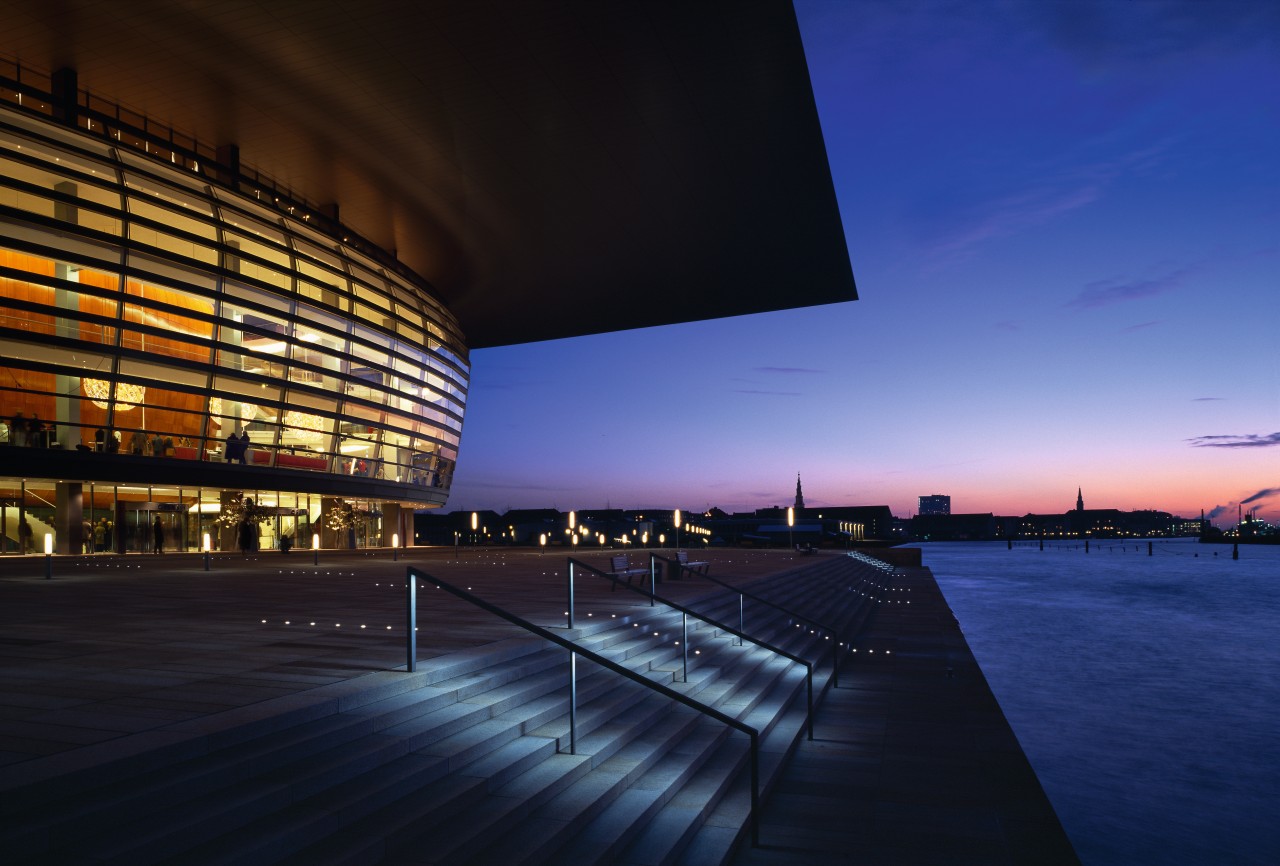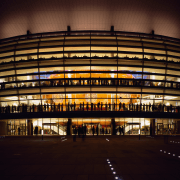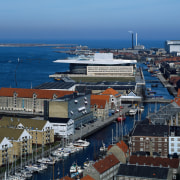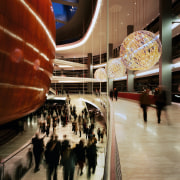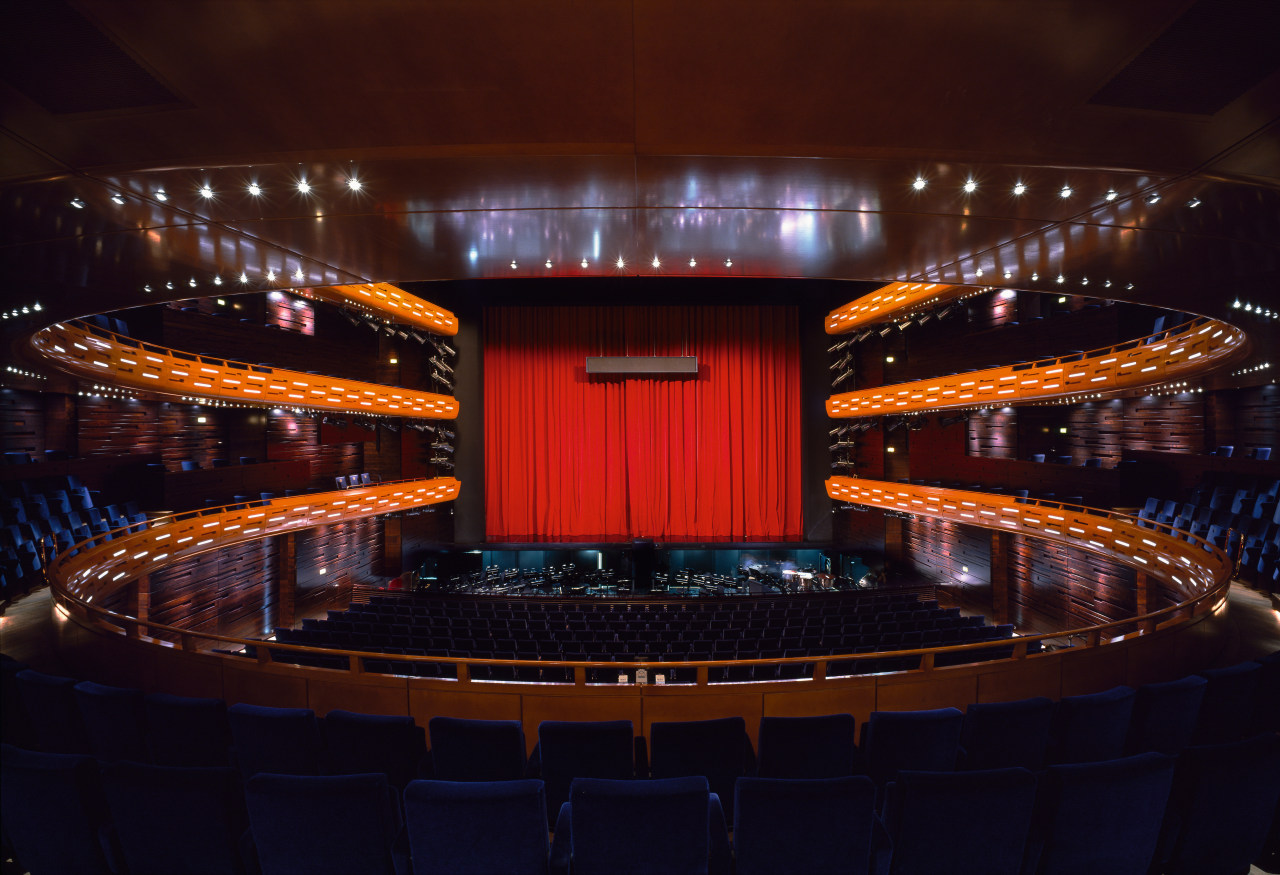light fantastic
Classic forms combine with modern concepts at the new Copenhagen Opera, creating a cutting-edge facility for a variety of spectacular performances
FROM ITS CANTILEVERED roof plane, to its soaring glass facade and the large conch-like auditorium visible behind it, Copenhagen's new Opera House is a symbol of all that is dynamic and forward-looking about the city. Situated on the former Royal Naval Dockyard, the Opera House shares the area with 17th-Century red brick warehouses and barracks that now house the Royal Academy schools specialising in drama, film, architecture and music.
However, within its expansive and historic location, the Opera stands apart from the crowd. In fact, to underscore the importance of the Opera House, two canals were excavated on either side, leaving the building to effectively occupy its own private island.
The Opera building had been donated to the people of Copenhagen by the AP Moller and Chastine Mc-Kinney Moller Foundation, with architectural firm Henning Larsens Tegnestue appointed as architect on the 41,000m² project.
The scale of the project is easy to see in its material volumes. The building shell consists of 61,000 tons of concrete and 4700 tons of steel reinforcing; the 4900m² facade is clad with 11,207 pieces of Jura Gelb, a calciferous stone from north Germany; and the entire site and all the quaysides have been paved with Chinese granite. Inside, 364 cubic metres of maple and 25,683m² of stained maple veneer cover the foyer and hall, while a staggering 1450 windows admit natural light.
When first glimpsed from the harbour, the Opera House's cantilevered roof stretches over 30 metres out towards the water and defines the welcoming plaza area below it.
Appearing to float above the main structure, the roof provides a unifying ele-ment of the Opera House, its architectural function both providing a sense of grand arrival and also bringing together the various spatial elements of the building. These include the Front of House', comprising the foyer and the auditorium, and Backstage', made up of the stage area, workshop facilities, dressing rooms, rehearsal facilities and administration.
The grand, covered arrival plaza beneath the roof plane is oriented towards the western evening sky, welcoming the audience approaching by boat or from the wide harbour promenade.
Looking into the Opera House from the water, the dramatic, golden-panelled central auditorium can be seen through the towering glass frontage the interaction between this auditorium shell and the public harbour space is a key element of the design. All part of the Front of House aesthetic, the foyer and the auditorium sit between the arrival level and the cantilevered roof, thus increasing the scale of the interior as the building expands out towards the harbour.
The Opera House foyer encircles the prominent form of the auditorium, which is inspired by the form of a sea conch. This smooth, round seashell conjures up musical instrument imagery, a motif sustained by the auditorium's violin-like surface finishes of stained, lacquered maple.
From the arrival level, the audience is led by two wide staircases to the main balcony on the first floor. From here, two further staircases lead to the upper balconies and to the banquet area, capable of hosting 200 guests on the fourth floor.
Two long bars with leather fronts serve the audience on the first two levels, with two smaller bars serving the upper balconies. Radial bridges connect the balconies of the foyer with the shell. These allow people to look down into the foyer from the balconies or straight out across the harbour through the five levels of glazing.
The auditorium itself, with its classical form of ground floor parterre and horseshoe balconies, creates an intense vertical room that contributes to the see and be seen' aspect of an operatic experience. This intimate room with steps and unbroken, curved rows of seating also accentuates the meeting between art and audience.
The auditorium can accommodate from 1400 to 1700 guests, depending on the required size of the flexible orchestra pit.
The golden maple panels on the exterior of the shell continue through the big central opening to the auditorium, where they are repeated in the balconies. The walls are in dark stained maple, the floor the colour of smoked oak. Horizontal recesses in various lengths and depths contribute to the auditorium's pitch-perfect acoustic ambience.
Given its theatrical function, lighting was an important part of the auditorium fit-out. A plethora of starry spots inserted in the gold-leaf ceiling light up the auditorium to magical effect, whilst the conical balcony fronts integrate decorative lighting in the horizontal recesses. Small spots are placed under the balconies to provide light for the balcony seats.
In a departure from operatic tradition, open balconies with raised podiums on the sides have replaced the classic private boxes to ensure optimum acoustics and sight-lines throughout.
The studio stage sits alongside this main stage, providing a flexible space for around 200 people. There are also two side stages, a back stage, and a separate fit-up stage and full scenic rehearsal stage. Additional facilities include rehearsal rooms for orchestra, choir, singers and ballet. Most rehearsal rooms are flooded with daylight and offer spectacular views across Copenhagen harbour.
Stage flexibility was central to the project, with the Opera House's stage wagon system designed for maximum versatility and speed of use. The system uses drive pinions in the floor which rise to engage in racks mounted on the underside of the wagons. The wagons move at floor level in canals formed by the lowering of equaliser elevators in their path.
A full set of equalisers is provided throughout stage support areas, ensuring all the stages can be at the same level and that no scenery or other equipment has to be lifted onto the wagons during fit-ups. As a result, fully built sets up to 11m high can be moved on a stage wagon system throughout all six stages.
A purpose-built ballet floor is stored under the rear stage and can be driven out onto the four lowered main stage elevators and raised to stage level, thus providing a rapid change over between opera and dance.
The Copenhagen Opera House has already been embraced as an iconic addition to the city. Not only designed to enhance the entertainment experience for all those who perform in or patronise the space, as befits a gift to the city's people, the architecture provides passers-by with a stand-out sculptural performance to share in.
Credit list
Client AP
Theatre consultant
Engineering
Landscape architect
Managing contractor
Architect
Acoustical consultant
Subconsulting engineering
Lighting architect
Story by: Trendsideas
Photography by: Adam Mork
Home kitchen bathroom commercial design
